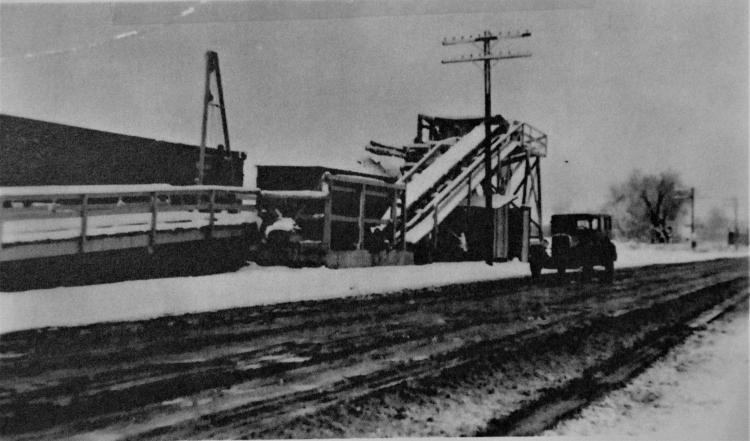So as we all know the narrow gauge trackage from Denver to Waterton was abandoned in 1942.
In M.C. Poor's Denver South Park and Pacific it is found that:
"The authority to abandon this section [Chatfield-Waterton] was granted on October 15, 1942, and two weeks later, on October 31st, the operation of all freight service on the remainder of the narrow gauge line from Denver to South Platte was discontinued. By November 21st, all rail beyond Chatfield was removed, and by December 5th, all narrow gauge rail between that point and Denver was removed." (409)
This was 3-rail track at the time, however. Poor continues that:
"In 1937, the line from Denver to Sheridan Junction was laid with third-rail to accommodate the sugar beet business in this vicinity. . . This third-rail was extended to Chatfield in 1939." (418)
The standard gauge spur to Chatfield remained for 8 more years. In the C&S annual reports of 1950 the following quote is found:
"On March 15, 1950, the Interstate Commerce Commission authorized the abandonment of the Chatfield branch line, approximately 6.51 miles, which resulted in a credit to capital account of $113,243."
The branch was then shortened to its current location just north of Sheridan Junction.
I have a few photographs from the Littleton museum of this period, they are copies of copies of copies and thus very low quality:

Several standard gauge gondolas sit at Chatfield. W.C. Cuthbert collection

Platte Canon road by the beet dump. October 29, 1939. W.C. Cuthbert collection
Another from DPL:

C&S 9 pulls a northbound load of Sugar Beets and presumably Feldspar. Otto Perry photograph, October 15, 1938. Third rail visible at bottom right. Location probably just north of Chatfield near M.P. 13 around present day Wadsworth/C-470. Assuming the date is correct, the third rail may have been extended to Chatfield before 1939.
http://digital.denverlibrary.org/cdm/fullbrowser/collection/p15330coll22/id/42504/rv/singleitem/rec/1I assume the branch could only have been used sparingly to collect beet harvests. However, does anyone have any information/knowledge/photographs of this brief period of operation? Any of Chatfield in general? I recall a shot of the "End of Third Rail" sign but can't find it. Maybe in Farrell's book? (I don't own it)
Thanks,
Daniel